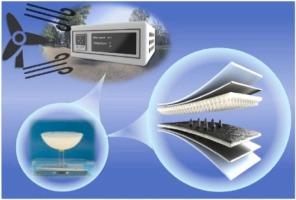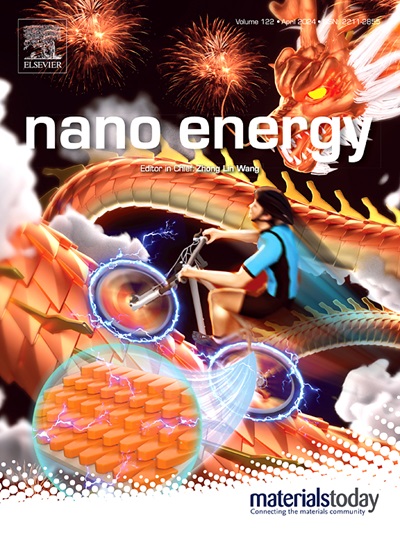Dual Nano/Micro Tip-Array based LiquidSolid Interface for Ultrahigh Sensitive Triboelectric Pressure Sensors
IF 16.8
1区 材料科学
Q1 CHEMISTRY, PHYSICAL
引用次数: 0
Abstract
Specific liquid solid contact electrification demonstrates a unique and promising generation of pressure sensors. However, improving sensitivity at the liquid
solid contact electrification demonstrates a unique and promising generation of pressure sensors. However, improving sensitivity at the liquid solid interface remains a substantial challenge. In this work, we present a ferrofluid-based triboelectric pressure sensor (FTPS) based on a strain-concentrated dual tip-array design between the liquid and solid phases. A silicone rubber film with a conical micro/nanostructure array and a ferrofluid with incisive spike microstructures tuned by a solid baseplate are employed as triboelectric pairs. The array-shaped microstructures of the solid- and liquid-sensing layers exhibit an opposing arrangement, manifesting a dual tip-array structure. The strain concentration effect arises from the coupling of high hydrophobicity caused by solid tip microstructures and high sharpness of liquid tip microstructures. In a load-bearing structure, there is a significant increase in strain when a sudden change in shape occurs. The sensitivity of the FTPS is positively correlated with the vertical deformation at the interface per unit pressure. Thus, an unprecedentedly high sensitivity of 38.84 kPa−1 and an inconceivably low detection limit of 0.76 Pa are attained. Finally, wind speed and direction detection with high sensitivity and stability based on the FTPS is demonstrated, indicating extensive practical applications for environmental monitoring and meteorological forecasting.
solid interface remains a substantial challenge. In this work, we present a ferrofluid-based triboelectric pressure sensor (FTPS) based on a strain-concentrated dual tip-array design between the liquid and solid phases. A silicone rubber film with a conical micro/nanostructure array and a ferrofluid with incisive spike microstructures tuned by a solid baseplate are employed as triboelectric pairs. The array-shaped microstructures of the solid- and liquid-sensing layers exhibit an opposing arrangement, manifesting a dual tip-array structure. The strain concentration effect arises from the coupling of high hydrophobicity caused by solid tip microstructures and high sharpness of liquid tip microstructures. In a load-bearing structure, there is a significant increase in strain when a sudden change in shape occurs. The sensitivity of the FTPS is positively correlated with the vertical deformation at the interface per unit pressure. Thus, an unprecedentedly high sensitivity of 38.84 kPa−1 and an inconceivably low detection limit of 0.76 Pa are attained. Finally, wind speed and direction detection with high sensitivity and stability based on the FTPS is demonstrated, indicating extensive practical applications for environmental monitoring and meteorological forecasting.

求助全文
约1分钟内获得全文
求助全文
来源期刊

Nano Energy
CHEMISTRY, PHYSICAL-NANOSCIENCE & NANOTECHNOLOGY
CiteScore
30.30
自引率
7.40%
发文量
1207
审稿时长
23 days
期刊介绍:
Nano Energy is a multidisciplinary, rapid-publication forum of original peer-reviewed contributions on the science and engineering of nanomaterials and nanodevices used in all forms of energy harvesting, conversion, storage, utilization and policy. Through its mixture of articles, reviews, communications, research news, and information on key developments, Nano Energy provides a comprehensive coverage of this exciting and dynamic field which joins nanoscience and nanotechnology with energy science. The journal is relevant to all those who are interested in nanomaterials solutions to the energy problem.
Nano Energy publishes original experimental and theoretical research on all aspects of energy-related research which utilizes nanomaterials and nanotechnology. Manuscripts of four types are considered: review articles which inform readers of the latest research and advances in energy science; rapid communications which feature exciting research breakthroughs in the field; full-length articles which report comprehensive research developments; and news and opinions which comment on topical issues or express views on the developments in related fields.
 求助内容:
求助内容: 应助结果提醒方式:
应助结果提醒方式:


